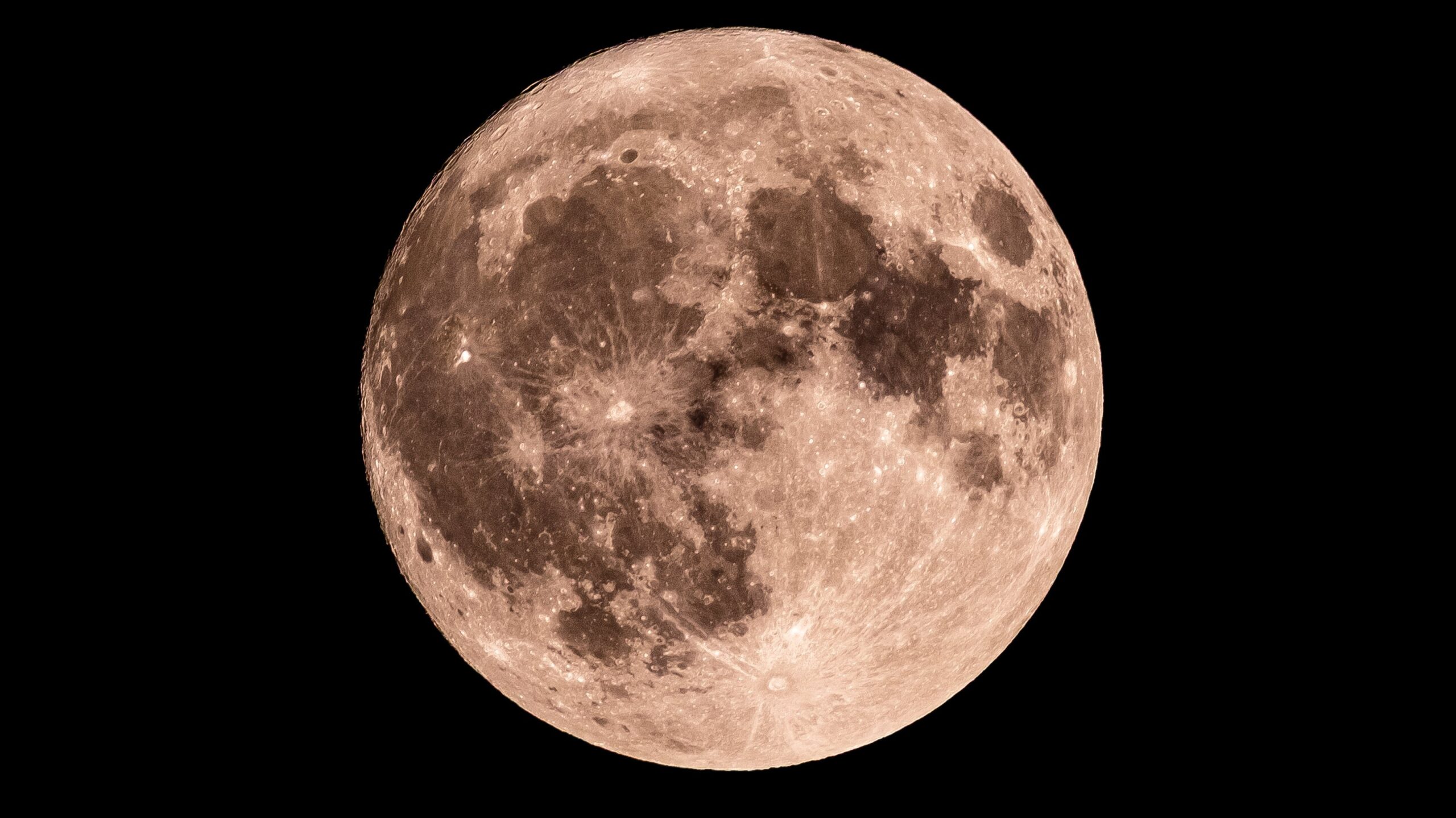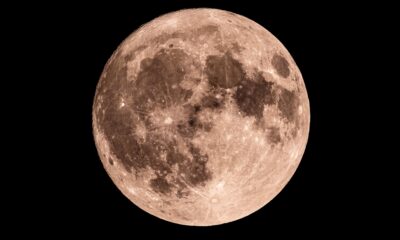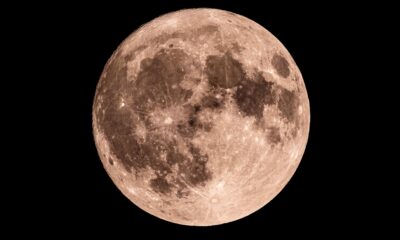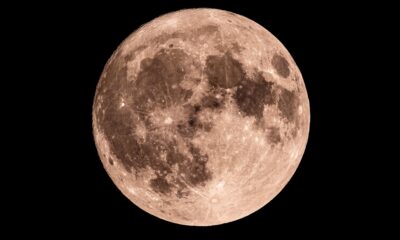Science
Discover the Waxing Gibbous Moon on August 4, 2025

As of August 4, 2025, the moon is in its Waxing Gibbous phase, illuminated at approximately 77%. This marks the 11th day of the lunar cycle, which spans about 29.5 days according to NASA. As the moon orbits Earth, varying angles between the Sun, Moon, and Earth create distinct phases that influence how we perceive the moon from our planet.
Tonight, observers can expect to see notable lunar features with the naked eye, including the Copernicus Crater, the Mare Tranquillitatis, and the Mare Crisium. For those equipped with binoculars, additional details such as the Posidonius Crater, the Mare Nectaris, and the Endymion Crater become visible. A telescope will reveal even more, including the Rima Arladaeus, the Descartes Highlands, and the Apollo 12 landing site.
Understanding Moon Phases
Moon phases result from the continual cycle of the moon’s orbit around Earth, which alters the sunlight’s reflection on its surface. As detailed by NASA, there are eight primary phases in the lunar cycle:
– **New Moon:** The moon is positioned between Earth and the Sun, rendering it invisible from our vantage point.
– **Waxing Crescent:** A sliver of light appears on the right side.
– **First Quarter:** Half of the moon is illuminated on the right side, creating a half-moon appearance.
– **Waxing Gibbous:** More than half of the moon is lit, but it is not yet full.
– **Full Moon:** The entire face of the moon is illuminated and visible.
– **Waning Gibbous:** The moon begins to lose light from the right side.
– **Last Quarter (or Third Quarter):** Another half-moon phase, with the left side illuminated.
– **Waning Crescent:** A thin sliver of light remains on the left side before the moon transitions back to a New Moon.
The next full moon will occur on August 9, 2025, following the previous full moon on July 10, 2025. Understanding these phases enhances our appreciation of the moon and its influence on both nature and human culture.
Tonight’s Waxing Gibbous phase offers a prime opportunity for both casual observers and astronomy enthusiasts to engage with the night sky. Whether through the naked eye or with optical aids, the moon continues to captivate and inspire those who look up to observe its changing visage.
-

 Politics3 weeks ago
Politics3 weeks agoPlane Crash at Southend Airport Claims Four Lives After Takeoff
-

 Top Stories3 weeks ago
Top Stories3 weeks agoAustralian Man Arrested for Alleged Damage to Stone of Destiny
-

 Business3 weeks ago
Business3 weeks agoTrump’s “One Big Beautiful Bill” Faces Economic Scrutiny
-

 Business3 weeks ago
Business3 weeks agoNew Study Links Economic Inequality to Lower Well-Being Globally
-

 Entertainment5 days ago
Entertainment5 days agoEmmerdale Characters Face Danger as Stabbing Shakes Village
-

 Lifestyle6 days ago
Lifestyle6 days agoTesco Slashes Prices on Viral Dresses in Summer Clearance Sale
-

 Sports3 weeks ago
Sports3 weeks agoSheffield United’s Young Talent Embraces Championship Opportunity
-

 Lifestyle3 weeks ago
Lifestyle3 weeks agoBrits Identify Adulting Challenges: Cleaning, Cooking, and Time Woes
-

 Health3 weeks ago
Health3 weeks agoAI Tool EAGLE Streamlines Lung Cancer Mutation Detection
-

 Sports3 weeks ago
Sports3 weeks agoEverton Pursues Johan Bakayoko as Transfer Deadline Approaches
-

 Science3 weeks ago
Science3 weeks agoStudy Reveals Widespread Flooding in North Carolina Exceeds Expectations
-

 Politics3 weeks ago
Politics3 weeks agoUncertain Future for The Royal Albert Pub as Landlord Departs





















